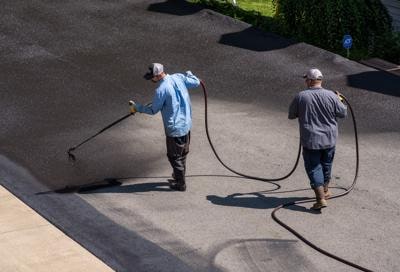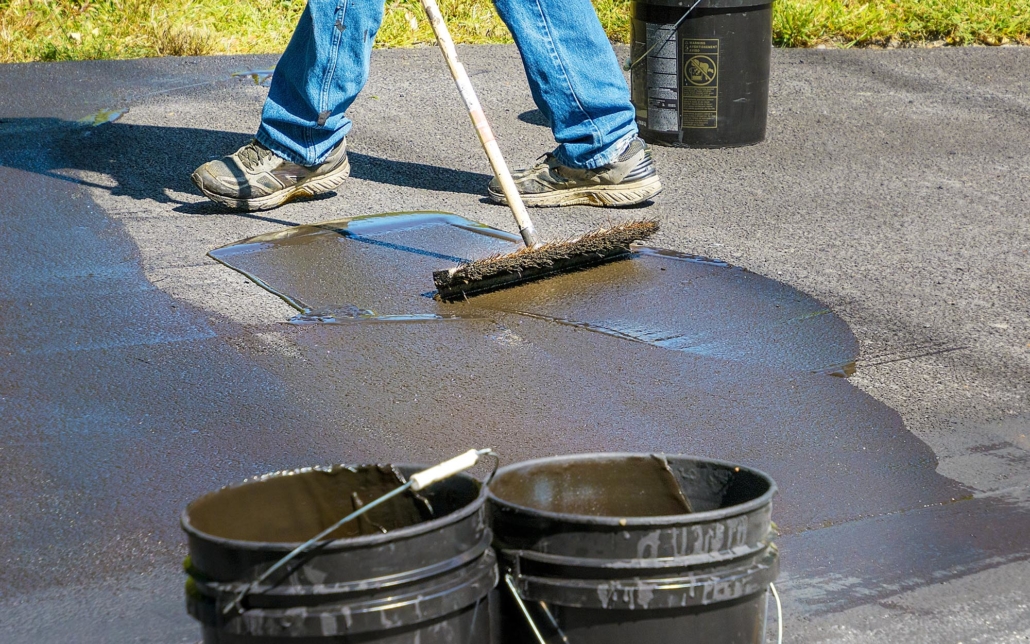Warm Mix Asphalt: A Lasting Solution for Sidewalk
Hot Mix Asphalt (HMA) has emerged as a leading sustainable option for sidewalk solutions, supplying a myriad of ingenious technologies and ecological benefits. Its capability to decrease and reuse materials energy intake provides a compelling case for its adoption in roadway construction tasks. The lasting performance and durability of HMA make it a recommended option for facilities development. As the demand for environmentally friendly building techniques expands, checking out the nuances of HMA's sustainability can offer important insights into the future of sidewalk solutions.
Environmental Advantages of Warm Mix Asphalt

In Addition, Hot Mix Asphalt assists to reduce metropolitan warmth island results. Its dark color absorbs sunlight, reducing the quantity of warmth mirrored back right into the ambience compared to lighter-colored sidewalks. This can lower ambient temperatures in city areas, reducing the need for cooling and eventually reducing power intake.
Furthermore, Warm Mix Asphalt adds to boosted stormwater monitoring. Its porous nature permits water to infiltrate the pavement and reenergize groundwater supplies, decreasing drainage and the threat of flooding. These ecological advantages make Hot Mix Asphalt a lasting choice for paving freeways and roads.
Power Performance in HMA Production
Is power efficiency an essential element in the manufacturing of Hot Mix Asphalt (HMA)? Energy plays a substantial function in the production of HMA, affecting both cost and ecological sustainability. One vital facet of power effectiveness in HMA manufacturing is the usage of warm mix asphalt (WMA) modern technologies.
Moreover, developments in plant innovations have resulted in more energy-efficient HMA production procedures. Modern plants are designed with attributes like recycled asphalt pavement (RAP) processing capabilities, reliable heater systems, and improved insulation, all adding to power savings. By optimizing power usage in HMA production, the sector can decrease its carbon footprint while keeping high-grade pavement materials. Power efficiency is, for that reason, a crucial consideration in making certain the sustainability of Warm Mix Asphalt production.
Recyclability of Warm Mix Asphalt
The recyclability of Warm Mix Asphalt (HMA) is a pivotal facet of its sustainability and lasting environmental influence. HMA is just one of one of the most recycled products in the United States, with over 100 million lots of redeemed asphalt pavement (RAP) being recycled every year in brand-new pavement construction. Reusing HMA uses numerous ecological benefits, such as decreasing the demand for virgin products, reducing power usage throughout manufacturing, and decreasing the amount of waste sent to landfills.
The procedure of recycling HMA entails grating the existing pavement, crushing it right into smaller sized items, and mixing it with new aggregate and asphalt binder to create a recycled mix. Generally, the recyclability of HMA plays a considerable role in promoting lasting methods within the pavement market.

Long-Term Performance of HMA
Asphalt sidewalks show longevity and strength over a prolonged period, reflecting the lasting performance of Warm Mix Asphalt (HMA) The durability of HMA can be associated to its capability to withstand hefty web traffic lots, extreme climate condition, and the impacts of aging. Research studies have revealed that well-designed and effectively built HMA pavements can last for two decades or even more with normal maintenance. The trick to making best use of the long-lasting efficiency of HMA hinges on making use of high-grade products, following ideal techniques in building and construction, and applying efficient upkeep methods. Correct water drainage, routine evaluations, and timely repair work are vital for protecting the architectural integrity of HMA pavements over time. In addition, developments in HMA technology, such as making use of polymer-modified binders and warm mix asphalt, have even more enhanced the sturdiness and durability of HMA sidewalks. By prioritizing top quality building and construction and maintenance practices, HMA proceeds to verify itself as a lasting and affordable solution for durable sidewalk facilities.

HMA: Toughness and Sustainability
Demonstrating both resilience and sustainability, Hot Mix Asphalt (HMA) has come to be a cornerstone in the building and construction of durable sidewalk facilities - regrading. HMA's durability stems from its ability to endure click to find out more hefty tons, rough climate condition, and high traffic quantities, making it a dependable selection for roads, freeways, and airport runways. The structure of HMA, which usually includes accumulations, binder, and filler, plays an important function in boosting its durability and resistance to wear and tear
Additionally, HMA's sustainability hinges on its recyclability and energy-efficient production procedure. The capacity to reuse recovered asphalt sidewalk (RAP) in new HMA mixtures minimizes the need for virgin materials and minimizes the environmental impact of sidewalk building and upkeep. In addition, the energy effectiveness of creating HMA hinges on its reduced mixing temperatures contrasted to other pavement products, bring about minimized power usage and greenhouse gas emissions.
Final Thought
In conclusion, hot mix asphalt (HMA) uses a sustainable remedy for pavement with its click over here now ecologically pleasant characteristics. HMA's recyclability, energy performance in manufacturing, and long-term durability make it an environment-friendly option for roadway construction.
HMA is one of the most recycled materials in the United States, with over 100 million heaps of recovered asphalt sidewalk (RAP) being recycled yearly in brand-new pavement building and construction.The procedure of recycling HMA entails milling the existing pavement, crushing it right into smaller sized pieces, and mixing it with brand-new accumulation and asphalt binder to develop a recycled mix.Asphalt sidewalks show durability and resilience over a prolonged period, mirroring the long-lasting performance of Warm Mix Asphalt (HMA) In addition, advancements in HMA technology, such as the usage of polymer-modified binders and warm mix asphalt, have better boosted the toughness and durability of HMA pavements. The capacity to recycle reclaimed asphalt pavement go to this website (RAP) in new HMA mixes reduces the need for virgin materials and reduces the ecological effect of sidewalk building and construction and upkeep.